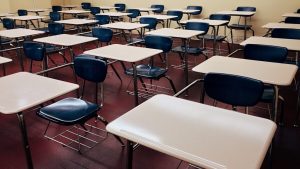In any Canadian city in the warmer months you’ll see lots of people engaged in active transportation, walking, cycling, skateboarding, scootering, roller blading or hoverboarding.
A new and unusual example of active transportation was seen recently on the University of British Columbia (UBC) campus, where a fleet of five electric-assist enclosed pedal tricycles was being tested.
The single-person vehicles, called VeloMobiles, had been deployed as a pilot program by Vancouver-based VeloMetro Mobility Inc. The novel vehicles are the hardware in a service called Veemo.
Veemo works like car-share services, in which drivers access a rentable vehicle by activating it with a phone app.
The controls for the vehicles, which weigh about 120 kilograms, are similar to any bicycle with pedals, handlebars and brakes. But VeloMobiles also have a touch-screen interface for windshield wipers, pedal speed, turn signals and electrical-powered assistance.
“Veemo is for anyone with a smartphone who wants to get from A to B,” says VeloMetro CEO Kody Baker. “According to our research, there’s a hole in the market for urban journeys from three to 10 kilometres. That’s the market we’re going after.”
Baker says VeloMetro hopes to launch Veemo as a commercial service in Vancouver in spring 2019.
In the meanwhile, it will be running another pilot program in September 2018, in which the service will be used by City of Vancouver employees.
Alex Bigazzi, a UBC civil engineering professor and director of the Research on Active Transportation (REACT) Lab, is investigating the potential for vehicles such as the VeloMobile to take at least a few internal combustion engines off the road.
Urban planning for electric bicycles suffers from insufficient understanding of their performance
— Alex Bigazzi
University of British Columbia
The lab, which Bigazzi founded in 2015, describes itself as “a group of researchers, inspired by the idea that truly sustainable transportation engineering and planning are possible, and that better information can lead to better decisions.
“Our focus is utilitarian bicycle and pedestrian travel analysis and modelling,” with speed and route choices, network design, energy expenditure, air pollution and health.
Bigazzi and his students are currently researching ways for the City of Victoria to encourage urban car drivers to use electric bicycles (e-bikes) for more of their personal and business travel.
Victoria has already invested heavily in cycling, walking and public transit infrastructure.
Because e-bikes are so new, relatively little is known about their potential for changing the way in which people get around.
“Urban planning for electric bicycles suffers from insufficient understanding of their performance, particularly with how they interact with other cyclists,” says Bigazzi. “Electric bicycle policy has lagged behind the evolving market, and there is a lack of clear, cohesive public policy regarding regulation, infrastructure and incentives.”
Although most European cities are ahead of North America in walking and cycling infrastructure, Canadian and American cities, especially Vancouver, New York and Portland, Oregon, have been catching up quickly.
About 10 per cent of all trips in the city of Vancouver are by bicycle, with the estimated maximum approximately 20 per cent, says Bigazzi.
The use of bicycles for transportation is determined by many factors, he says, such as urban layout, transportation policy, fuel prices, attractiveness of alternatives and the future use of autonomous cars.
Vancouver architect and planner Michael Geller says cities around the world are creating more bicycle- and pedestrian-friendly areas.
“There are bike-share programs all over the world, including Russia,” says Geller. “But we need to keep in mind the bigger picture, which is that trips by bicycle in most cities are less than five per cent of total trips. It’s difficult to survive in the suburbs, where most people still live, without a car.”
Winnipeg architect Brent Bellamy says up to 90 per cent of all growth in Canadian cities is in car-oriented suburbs.
“Most new neighbourhoods don’t have the density or physical layout to support high participation in active transportation, with shopping, recreation or employment typically requiring a drive to access,” he says. “This likely will not change. Active transportation in these neighbourhoods will generally remain a recreational activity — biking around instead of biking to.”
Bellamy says active transportation is changing development and growth patterns in mature neighbourhoods and inner cities that have the density and amenities to make alternate transportation attractive and convenient.
“Walkability is becoming an important driver of real estate values, which creates growth,” says Bellamy. “Cities can use investment in walking and cycling infrastructure to make neighbourhoods more livable and target areas of infill residential growth and renewal as well as increasing access and development on neighbourhood main streets and urban shopping districts.”











Recent Comments